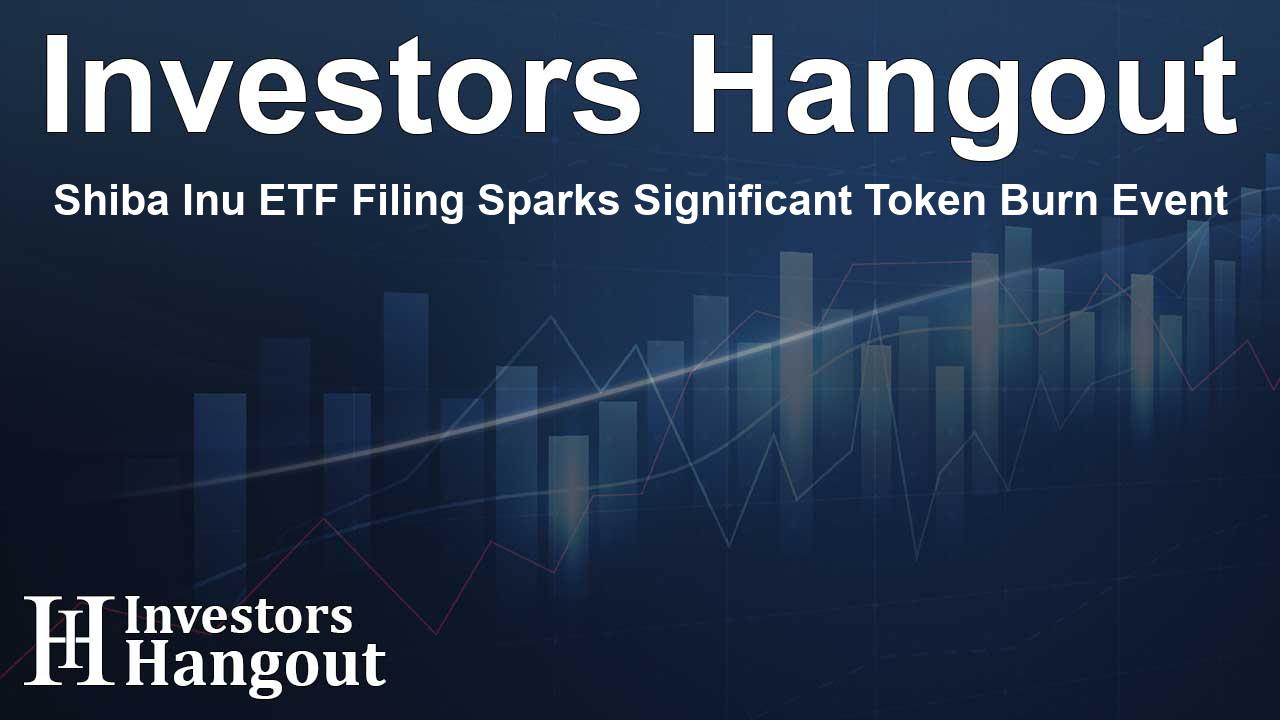Shiba Inu ETF Filing Sparks Significant Token Burn Event

Introduction to Shiba Inu's Latest Market Movement
In a remarkable turn of events, nearly 8 million Shiba Inu (CRYPTO: SHIB) tokens have been permanently removed from circulation. This token burn follows the groundbreaking submission of a Shiba Inu ETF, igniting renewed excitement among enthusiasts of this popular meme cryptocurrency.
Details of the Token Burn
Recent data from Shibburn, a platform dedicated to tracking Shiba Inu's on-chain activity, has revealed a staggering 208% increase in burn rate. Over a mere 24-hour timeframe, a total of 7,943,107 SHIB tokens have been incinerated, underscoring the profound impact the ETF filing has made on the community.
Implications of the ETF Filing
This development comes as a U.S. investment firm, managing over $1.7 trillion in assets, has made history by filing for the first-ever spot Shiba Inu ETF. Such a pivotal move not only reaffirms the potential of SHIB but positions it alongside heavyweights in the cryptocurrency space, including Bitcoin (CRYPTO: BTC), Ethereum (CRYPTO: ETH), and XRP.
Revival of SHIB Interest
The increased burn rates correspond with a heightened market interest, leading to a resurgence in the price of SHIB. This newfound optimism is evidenced by a 2.49% price increase over the last day, indicating a shift in market sentiment.
The Significance of Token Burning
Token burning is a crucial mechanism within the cryptocurrency ecosystem, aimed at reducing circulating supply and potentially enhancing value. As more SHIB tokens are burned, scarcity increases, which can lead to price appreciation.
Market Sentiment and Future Prospects
The recent surge in SHIB burn activity signifies a notable change in sentiment in the cryptocurrency market. This positive shift may result in further appreciation of SHIB’s value as the ecosystem continues to expand and attract new investors.
Conclusion: Potential for Growth
With the Shiba Inu ETF filing and the spike in burn rates, the future looks promising for SHIB. As it gains recognition alongside leading cryptocurrencies, the potential for further growth becomes increasingly evident.
Frequently Asked Questions
What caused the recent spike in SHIB burn rates?
The spike in SHIB burn rates was triggered by the filing of the first-ever Shiba Inu ETF by a major U.S. investment firm, leading to increased interest in the token.
How many SHIB tokens have been burned recently?
Nearly 8 million SHIB tokens were burned following the ETF filing, reflecting a significant increase in burn activity.
What does token burning mean for SHIB’s price?
Token burning reduces the overall supply of SHIB, which can increase its value over time as scarcity grows.
Which other cryptocurrencies are mentioned alongside SHIB?
Bitcoin (BTC), Ethereum (ETH), and XRP are noted as major cryptocurrencies alongside Shiba Inu in the recent ETF filing context.
What is the current market outlook for Shiba Inu?
The outlook for Shiba Inu looks positive, with increased burn activity and rising prices indicating strong market sentiment and potential growth.
About The Author
Contact Thomas Cooper privately here. Or send an email with ATTN: Thomas Cooper as the subject to contact@investorshangout.com.
About Investors Hangout
Investors Hangout is a leading online stock forum for financial discussion and learning, offering a wide range of free tools and resources. It draws in traders of all levels, who exchange market knowledge, investigate trading tactics, and keep an eye on industry developments in real time. Featuring financial articles, stock message boards, quotes, charts, company profiles, and live news updates. Through cooperative learning and a wealth of informational resources, it helps users from novices creating their first portfolios to experts honing their techniques. Join Investors Hangout today: https://investorshangout.com/
The content of this article is based on factual, publicly available information and does not represent legal, financial, or investment advice. Investors Hangout does not offer financial advice, and the author is not a licensed financial advisor. Consult a qualified advisor before making any financial or investment decisions based on this article. This article should not be considered advice to purchase, sell, or hold any securities or other investments. If any of the material provided here is inaccurate, please contact us for corrections.
